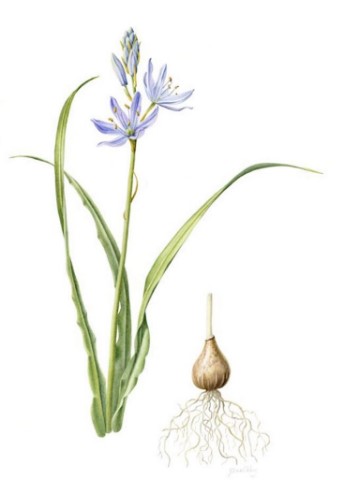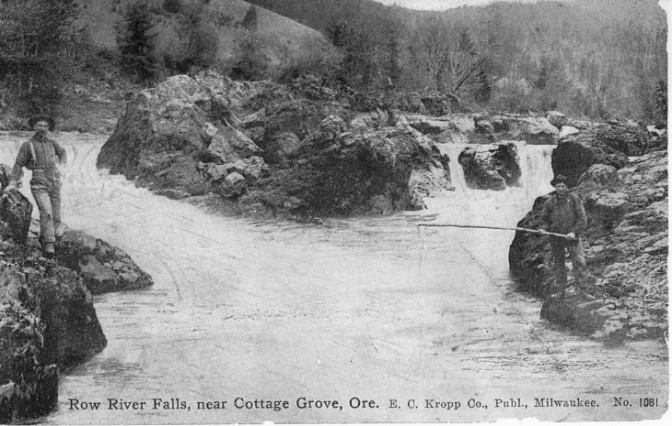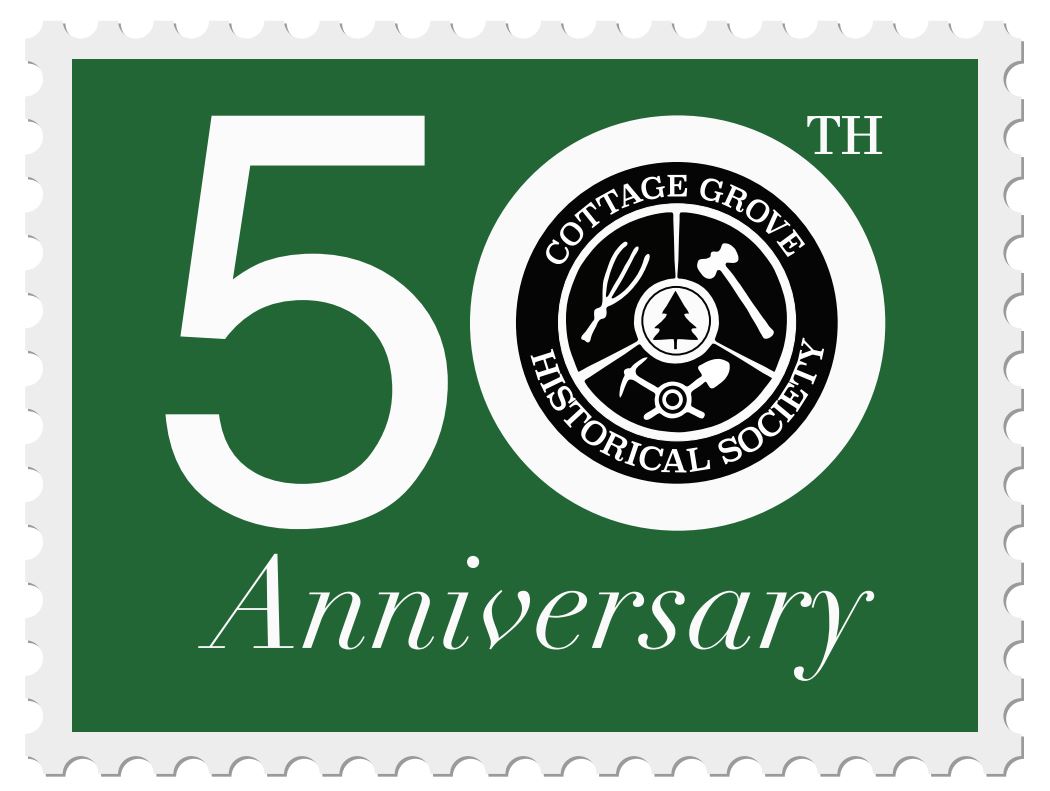Originally appeared in the March 2013 Historical Society Newsletter
Student Version
“No river can return to its source, yet all rivers must have a beginning” Native American Proverb quote
Long before the arrival of European Americans, the south end of the Willamette Valley was home to large tribes of Kalapuya Indians. There is very little known about the life of Indians in this area prior to the arrival of fur trappers and white settlers. As with many native tribes, history was passed on through oral story telling. Often these stories were told in fantastical form and whites that heard them assumed they were fictitious stories told for entertainment. Within these stories are hidden the true history of the tribe.
 Life in the valley was peaceful and fruitful. The rivers were filled with fish including trout and salmon. Valley fields were ripe with camas, grasshoppers, berries and hazelnuts. Forests were filled with animals for hunting and wild plants for harvesting. Rivers also provided a ready source of water. Maybe because of the abundance of food and water, the Kalapuya Indians did not believe in cutting into the earth to plant crops. They believed that by leaving the earth alone the earth would provide.
Life in the valley was peaceful and fruitful. The rivers were filled with fish including trout and salmon. Valley fields were ripe with camas, grasshoppers, berries and hazelnuts. Forests were filled with animals for hunting and wild plants for harvesting. Rivers also provided a ready source of water. Maybe because of the abundance of food and water, the Kalapuya Indians did not believe in cutting into the earth to plant crops. They believed that by leaving the earth alone the earth would provide.
The practice of field burning, often argued about today, was the norm for the local Indians. The fields were burned to clear young trees and prepare the ground for another year of fertile growth. Fires were also used to herd larger game such as rabbits and deer toward hunters ready to take aim. The valley landscape was well managed and maintained for future harvests. The presence of fir trees in the valley is a fairly new occurrence. When settlers took over the land they quit burning fields not utilized for crops and fir trees from the surrounding hills began encroaching on the valley floor.
One crop that was a staple among the Kalapuya was camas. The bulb of the camas flower as harvested, roasted, ground, and dried into large cakes for storage. This flower was abundant here in the valley and used in a variety of foods. The root is similar in look and texture to onions. They would be eaten raw, roasted, as a mush, or baked into a bread like product. Field burning also encouraged the growth of camas. While most camas is edible, the white or yellow camas is poisonous. When found, members of the tribe would destroy these plants to discourage their spread.
Contrary to popular belief, teepee’s were not used by the Indians of the area. Teepees spotted in the area were used by fur trappers who frequented the Willamette Valley. Kalapuya Indians lived in longhouses. These homes were built out of cedar planks and housed large extended family groups. Cedar logs were split with wedge like tools into planks. The floor of the house was dug out of the earth and left as packed dirt. Poles would create the supports and cedar planks created walls and a roof. The ridge of the longhouse roof was left open to let smoke escape. It would seem that these openings would cause issues in the rainy season, but surprisingly the gap in the ridge of the roof did not permit rain to enter. Tule reed mats would be used for more portable, less permanent structures.

Villages lined many of the local rivers and tributaries. Evidence of populated areas have been found along Bennett Creek, Coast Fork, Row River and Silk Creek. These villages served as home to thousands of tribe members for hundreds of years prior to the arrival of Fur Trappers. During the Fall and Winter months the valley would teem with thriving communities. When Spring came large groups would travel into the mountains to gather produce, hunt game, and fish the rivers restocking food supplies for the winter. Yearly gatherings of tribes from miles around occurred at specific locations including Wildwood Falls, often coinciding with salmon runs. These gatherings were not just a time to stock up on salmon for the year, but also large social and trading events. Tribes from Klamath Falls to the coast would gather to trade tools, baskets, foods and stories. Marriages were arranged, ideas swapped, stories told, and friends reconnected.
Though our knowledge of these great tribes is scarce, we have a responsibility to remember. A responsibility to the past, a responsibility to future generations to record this history as accurately as possible, not to create interesting entertaining stories, but to remember those who first called this valley home.
